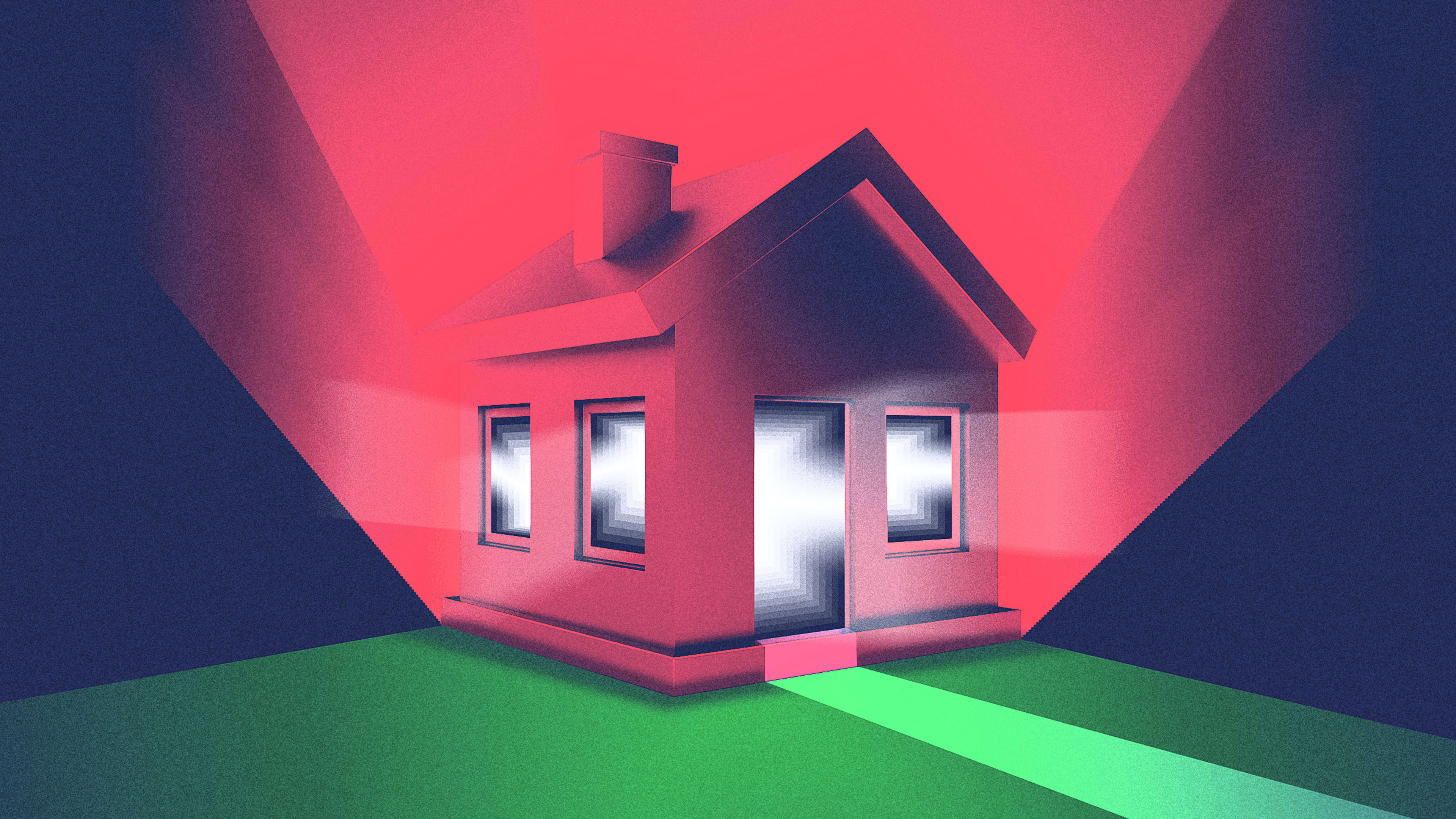This story is part of Home Bound, a series that examines Americans’ fraught relationship with their homes—and the once-in-a-lifetime opportunity to hit the reset button. Read more here.
The past year has highlighted just how much our homes matter—and just how problematic the American idea of “home” is. Within days last spring, our worlds shrunk and our houses were forced to become offices, schools, restaurants, and conference rooms. Nearly everything that you could once imagine doing somewhere else suddenly had to happen within the four walls of your home.
And even as we felt trapped and claustrophobic, for many people, home was also a sanctuary, the one place they could remove their masks and take a deep breath. People baked and gardened; practiced yoga and learned French.
But that wasn’t true for everyone. When COVID-19 first hit the U.S., it was called the great equalizer. People believed it didn’t discriminate. That soon became the great lie, as Black and brown communities, low-income workers, and multi-generational households were infected at wildly disproportionate rates. For many people, home became yet another stressor.
In this editorial package, we look at how the pandemic threw a spotlight on all the ways the home is and isn’t working for American families. Through stories about everything from indoor air pollution to affordable housing, we explore a once-in-a-lifetime opportunity to hit the reset button.
This examination must happen at every level: Consumers can be more discerning about what they bring into their homes—examining their food, furniture, and cleaning supplies. But even more important, there must be a reckoning at a national level. Policies must be changed; safe housing must be seen as a human right. This is even more true now, as COVID-19 has exacerbated inequality in America and laid bare just how stark the divide is.

The Biden administration has shown a willingness to mitigate some of the pandemic’s worst effects. The $1.9 trillion stimulus bill included $42 billion for housing assistance, and the proposed infrastructure bill goes even farther, earmarking $213 billion to support affordable housing and pushing for zoning reform.
The stimulus also included a child tax credit that is expected to lift millions out of poverty and billions to support the child care industry. As Brigid Schulte, director of the Better Life Lab at New America, writes, childcare is also a housing issue: It’s a crucial part of what enables working parents to provide a stable home for their children. These efforts will hopefully help alleviate another cruelty of the pandemic: its disproportionate impact on women. With daycares and schools shuttered, parents struggled to balance their own jobs with their children’s education. Mothers shouldered the bulk of this workload, and it took a toll: More than 2.3 million women have left the workforce since February 2020, plunging their labor participation to levels not seen since 1988. And despite the fact that, in many relationships, both partners were working from home, women also continued shouldering the bulk of the housework. (Of course, even being able to work from home was a privilege; many low-wage workers had to show up in person throughout the pandemic.)
The increased time at home has also made people hyperaware of the air inside their homes. While the focus has understandably been on virus particles, director of the Healthy Buildings program Joseph Allen writes that there are other invisible toxins that can permeate our homes without us knowing. Improving indoor air quality is crucial, as is making reparations for decades of racist housing policies that left Black and brown communities with fewer green spaces, higher temperatures, and polluted outdoor air. What’s inside our homes and where they’re built can have a huge impact on our health—and the negative effects are disproportionately felt by low-income and minority households.
And while home ownership is not a right, safe and affordable housing should be. As Matthew Desmond, author of Evicted: Poverty and Profit in the American City, has said: “Without stable shelter, everything else just falls apart.” Not having stable housing makes it harder to find and keep a job, harder to have consistent access to healthcare, and harder for kids to get a good education. It pulls people even deeper into poverty, creating a cycle that’s nearly impossible to break out of. In this package, Nate Berg looks closely at the lack of affordable housing in the United States, arguing that even with increased federal aid, it’s time for cities to take the lead and start buying privately owned buildings that can be turned into affordable housing. This isn’t the only solution—fixing the housing crisis will require a number of creative approaches—but it’s one of the most radical, and a way for cities to be proactive.
The pandemic has forced us to reflect on what we want in our homes and, by extension, how we really want to live—as members of a household and members of society. It’s time to update the American idea of the dream home to be inclusive of all 300 million Americans.
Recognize your brand’s excellence by applying to this year’s Brands That Matter Awards before the early-rate deadline, May 3.
